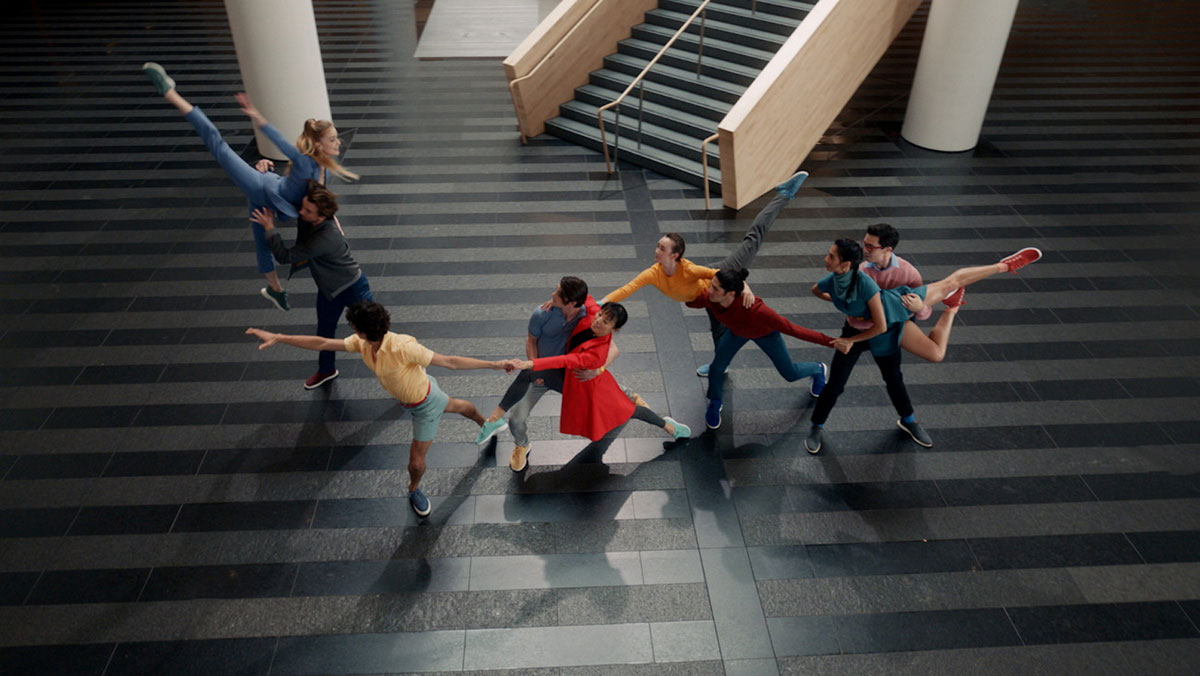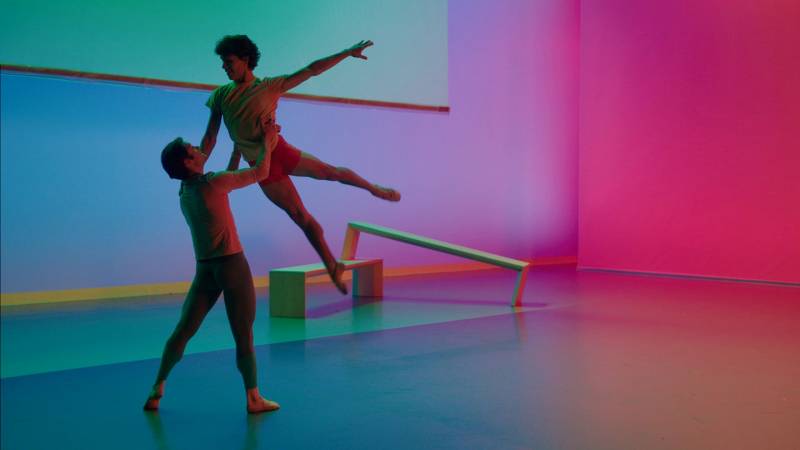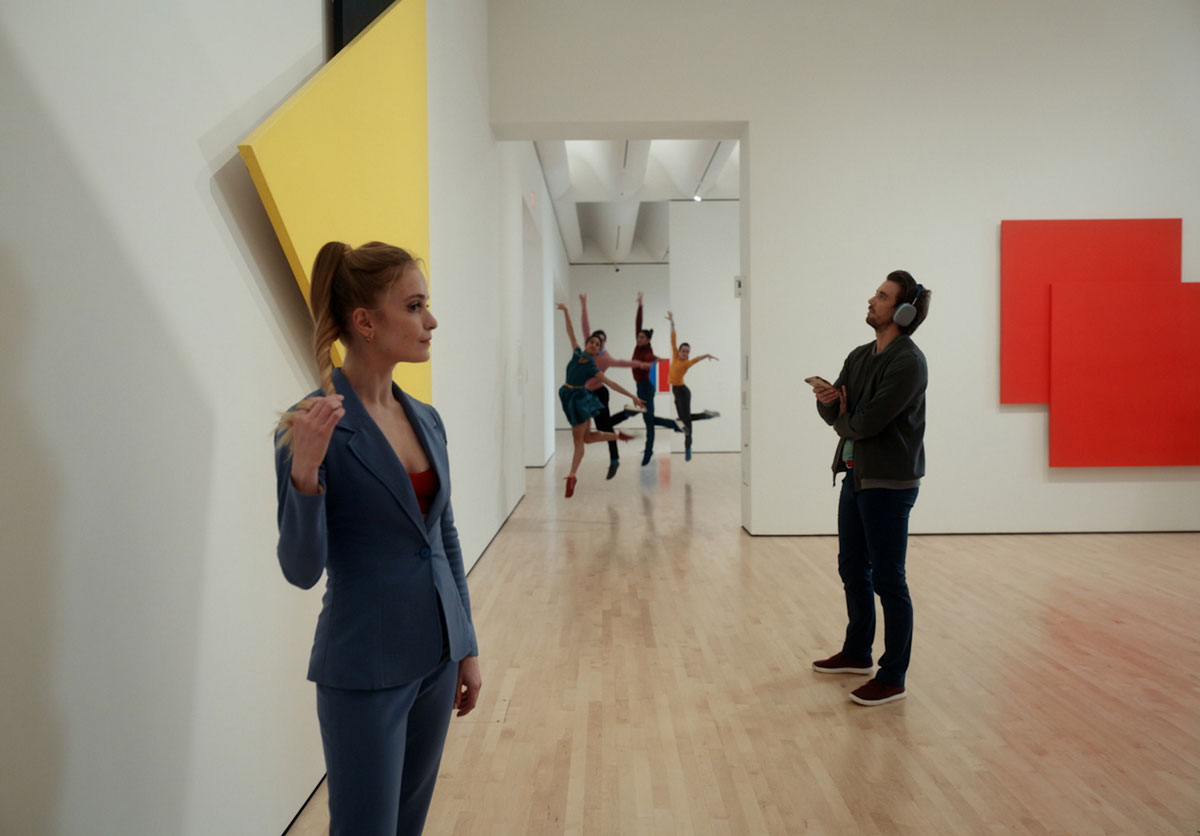As we wait less and less patiently for the reopening of our favorite cultural spaces, digital programming attempts to fill the void—with 3D renderings of exhibitions, streaming events and pre-recorded performances repackaged into on-demand homebound “experiences.” To be fully honest, I’ve mostly stayed away from all of the above in an effort to live at least some of my life away from a screen. I wouldn’t blame you if you adopted a similar stance.
But if we can agree there’s no replacement for the real thing, maybe that leaves us more open to the un-real thing—the more surreal and fantastical, the better. And that’s where Myles Thatcher’s new work COLORFORMS takes a joyful leap into wish fulfillment, for ballet and visual art audiences alike.
Originally planned as a live piece, the pandemic necessitated a shift to video, resulting in a collaboration between SF Ballet and the San Francisco Museum of Modern Art. Instead of bringing movements inspired by Alexander Calder’s mobiles into the ballet (as he originally intended), COVID-19 restrictions gave Thatcher the opportunity to bring the ballet to Calder’s mobiles. His piece places dancers inside the shuttered SFMOMA: in rooms of Ellsworth Kelly paintings, next to giant Calder sculptures, and sliding down the Snøhetta staircase into Mario Botta’s 3rd Street lobby.

For those of us who yearn to once again see familiar artworks in person, Thatcher’s dancers live the dream, cavorting through SFMOMA’s empty galleries and flouting even the most basic rules of museum-going. (One dancer blows bubblegum! Two dancers throw paper airplanes! Someone slides down a staircase railing!) In quick cuts, director and editor Ezra Hurwitz flashes between the dancers-as-museum-goers and the dancers in a more dreamlike space, where they seem to personify the implied action of the paintings and sculptures that surround them.
Susan Roemer’s primary-hued costumes and Jim French’s saturated lighting design fluidly connect these real and imagined spaces. At SFMOMA, the dancers wear comfortable color-blocked outfits and sneakers. (Deep in the Fisher collection, I couldn’t help but think “Gap ad?” at one point.) In scenes filmed inside the War Memorial & Performing Arts Center, their costumes morph into dance attire, but within the same palette. Slight visual clues—a museum bench, an oversized rectangular frame—connect the physical properties of SFMOMA with this more gauzy theater setting.



